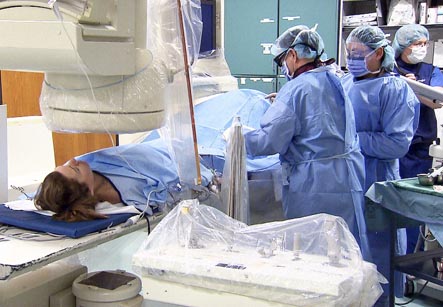Liberation Treatment CCSVI
Introduction
Chronic Cerebrospinal Venous Insufficiency or CCSVI is a condition where the blood that reaches the brain or the spine has problems returning to the heart for purification from harmful toxins and oxygenation.
Paolo Zamboni in 2008 suggested that this condition could play a role in development and detorioration of the degenerative nerve disease Multiple Sclerosis.
The common cause of this condition is narrowing or thinning of the veins that drain blood from the brain and spine. This blood that gets stuck in between the heart and the brain may sometimes back flow into the brain leading to accumulation of fluids or edema and even leakage of red blood cells in these vital organs. This leakage may lead to deposition of iron in the brain. Additionally the brain gets robbed of vital oxygen leading to a condition called hypoxia. Both lack of oxygen and accumulation of harmful chemicals can damage the brain and nerve tissues severely.
Iran has made significant progress in neurosurgery and The world renowned Iranian scientist in neurological surgery Professor Majid Samii has garnered the 2014 Golden Neuron Award. We have all the information you need about public and private clinics and hospitals that provide Neurosurgical surgeries in Iran, Islamic Republic Of with the best quality and lowest possible price

Procedure
The term Chronic Cerebrospinal Venous Insufficiency CCSVI is a relatively new one. It was coined by Paolo Zamboni in 2008. He suggested that this condition could play a role in development and detorioration of the degenerative nerve disease Multiple Sclerosis. To manage the condition Zamboni also devised a procedure (Zamboni liberation procedure or Zamboni Liberation Therapy). This therapy involves using a ballon angioplasty or stent to open up the narrowed veins and improve blood flow.
Considerations
The liberation therapy until 2011 was still performed on clinical trial patients and was not yet been approved for general use by health authorities. It involves insertion of a balloon like device into the narrowed veins and dilating them. Further a stent or mesh like scaffold is placed within the vein to help it stay open and allow the normal flow of blood.